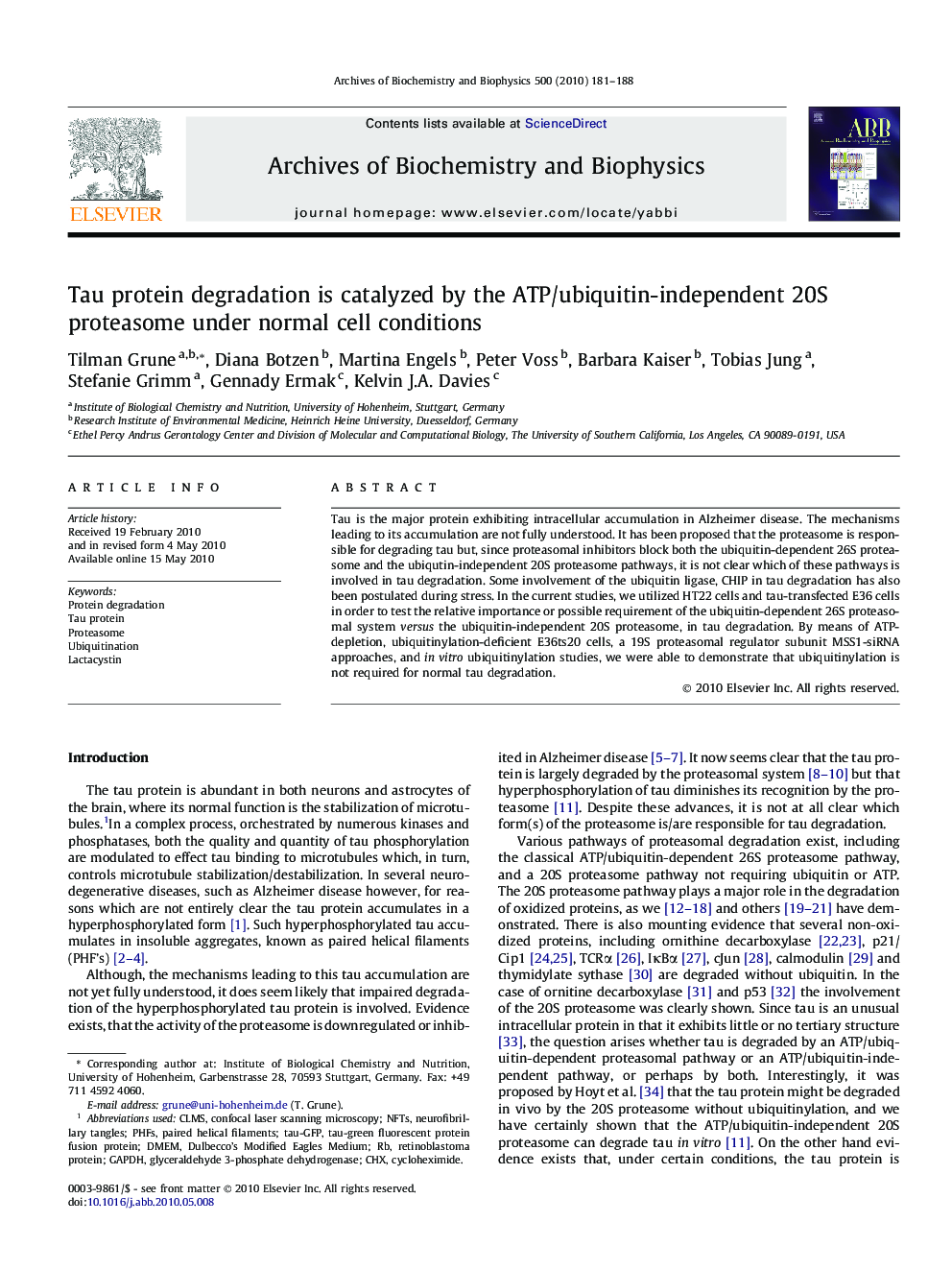| Article ID | Journal | Published Year | Pages | File Type |
|---|---|---|---|---|
| 1926027 | Archives of Biochemistry and Biophysics | 2010 | 8 Pages |
Tau is the major protein exhibiting intracellular accumulation in Alzheimer disease. The mechanisms leading to its accumulation are not fully understood. It has been proposed that the proteasome is responsible for degrading tau but, since proteasomal inhibitors block both the ubiquitin-dependent 26S proteasome and the ubiqutin-independent 20S proteasome pathways, it is not clear which of these pathways is involved in tau degradation. Some involvement of the ubiquitin ligase, CHIP in tau degradation has also been postulated during stress. In the current studies, we utilized HT22 cells and tau-transfected E36 cells in order to test the relative importance or possible requirement of the ubiquitin-dependent 26S proteasomal system versus the ubiquitin-independent 20S proteasome, in tau degradation. By means of ATP-depletion, ubiquitinylation-deficient E36ts20 cells, a 19S proteasomal regulator subunit MSS1-siRNA approaches, and in vitro ubiquitinylation studies, we were able to demonstrate that ubiquitinylation is not required for normal tau degradation.
